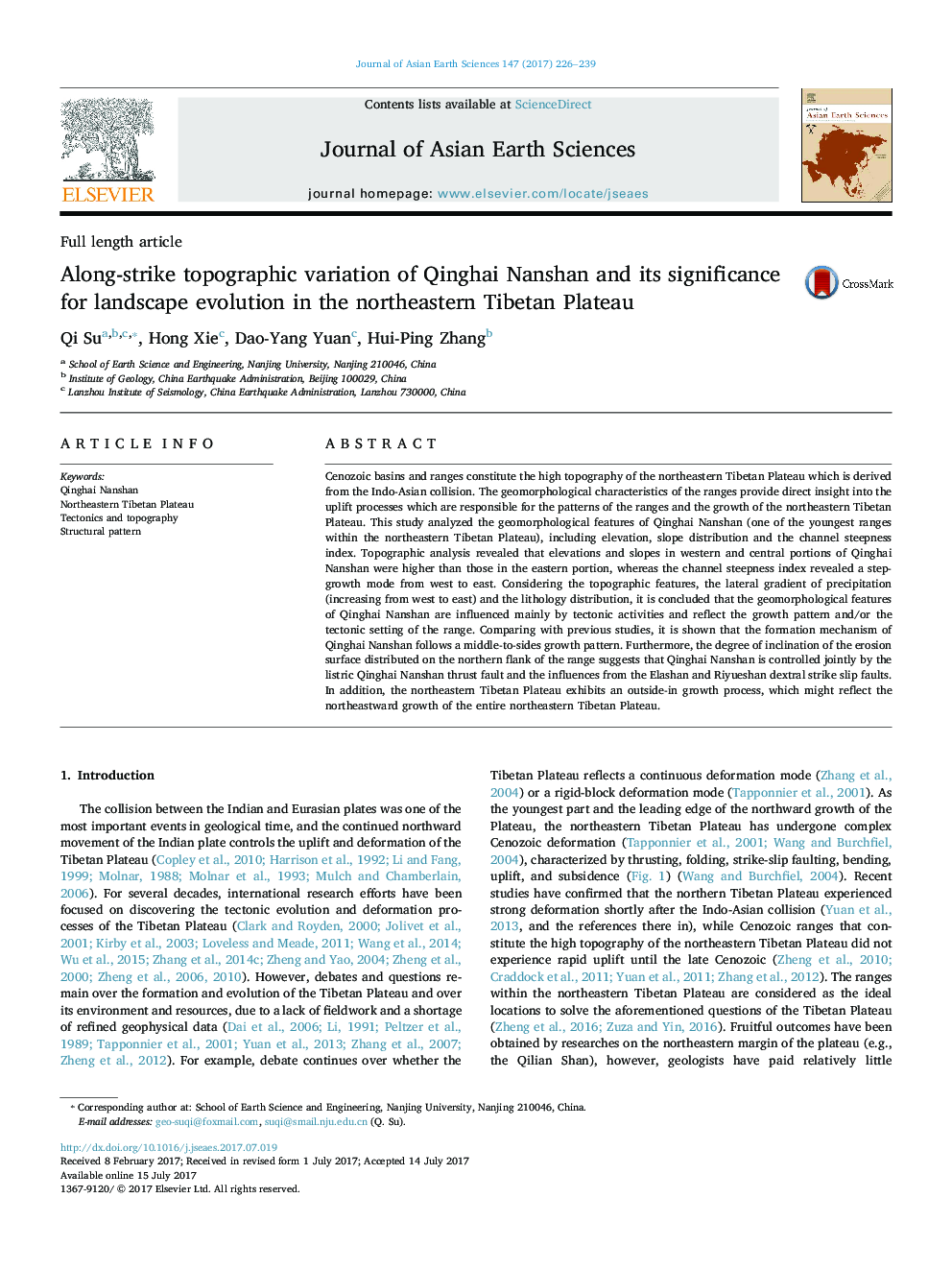| کد مقاله | کد نشریه | سال انتشار | مقاله انگلیسی | نسخه تمام متن |
|---|---|---|---|---|
| 5785874 | 1640326 | 2017 | 14 صفحه PDF | دانلود رایگان |
- Geomorphological characteristics of Qinghai Nanshan are analyzed.
- Elevations and slopes decrease from the western Qinghai Nanshan to the east.
- Ksn values show a trend of step-type growth from west to east.
- Tectonic activities are the main factor causing the geomorphological variations.
- The along-strike topographic variation result from a middle-to-sides growth pattern.
- The northeastern Tibetan Plateau exhibits an outside-in growth process.
Cenozoic basins and ranges constitute the high topography of the northeastern Tibetan Plateau which is derived from the Indo-Asian collision. The geomorphological characteristics of the ranges provide direct insight into the uplift processes which are responsible for the patterns of the ranges and the growth of the northeastern Tibetan Plateau. This study analyzed the geomorphological features of Qinghai Nanshan (one of the youngest ranges within the northeastern Tibetan Plateau), including elevation, slope distribution and the channel steepness index. Topographic analysis revealed that elevations and slopes in western and central portions of Qinghai Nanshan were higher than those in the eastern portion, whereas the channel steepness index revealed a step-growth mode from west to east. Considering the topographic features, the lateral gradient of precipitation (increasing from west to east) and the lithology distribution, it is concluded that the geomorphological features of Qinghai Nanshan are influenced mainly by tectonic activities and reflect the growth pattern and/or the tectonic setting of the range. Comparing with previous studies, it is shown that the formation mechanism of Qinghai Nanshan follows a middle-to-sides growth pattern. Furthermore, the degree of inclination of the erosion surface distributed on the northern flank of the range suggests that Qinghai Nanshan is controlled jointly by the listric Qinghai Nanshan thrust fault and the influences from the Elashan and Riyueshan dextral strike slip faults. In addition, the northeastern Tibetan Plateau exhibits an outside-in growth process, which might reflect the northeastward growth of the entire northeastern Tibetan Plateau.
365
Journal: Journal of Asian Earth Sciences - Volume 147, 1 October 2017, Pages 226-239
